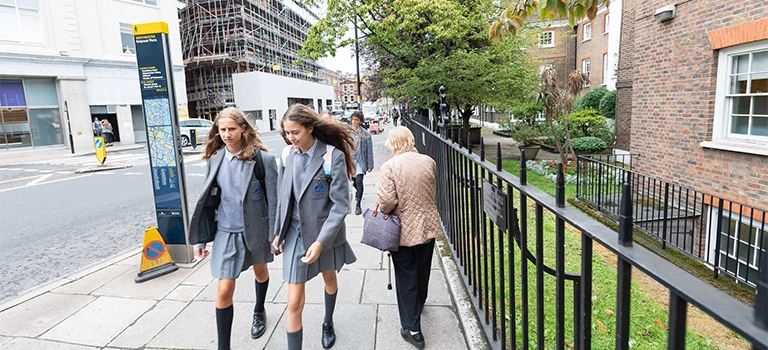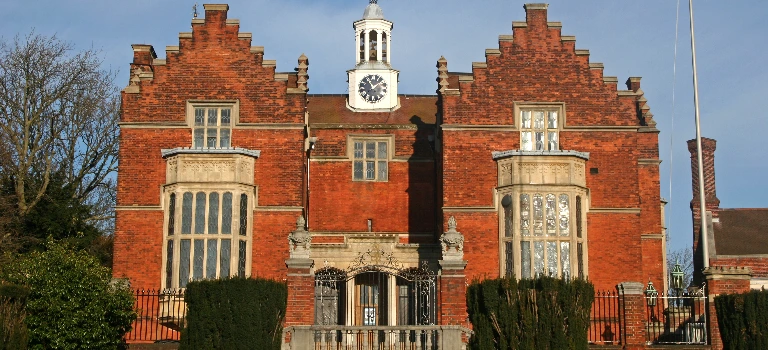As a globally renowned destination for providing excellent education, London attracts many families looking to educate their children. A good mix of prestigious private schools and ‘Outstanding’ state schools makes the UK capital a hotspot for homebuyers looking to enrol their kids in a premier institution. As a result, it comes as no surprise that parents are often willing to pay a premium for a home within the catchment area of a sought-after school.

In fact, according to data from leading property portals, properties near schools rated as ‘Outstanding’ by Ofsted command an average premium of up to 30% compared to similar properties located just outside the catchment area. In this blog, we will look at how school catchment areas are determined, their impact on property prices, and why demand for homes in such areas remains strong.
What is a catchment area and how is it decided?

A school’s catchment area refers to the neighbourhoods closest to the school, where residents are given priority for admissions based on proximity. While this area typically includes postcodes nearest to the school, the exact boundaries can vary depending on the demand for places and the number of applicants. The local education authority or the school itself will decide the catchment area.
Are there any other factors influencing admission besides proximity?
While living near a school improves the chances of securing admission, other factors may also come into play. For example, some schools have policies prioritising siblings of existing pupils or families who have attended the school for generations. Faith-based schools may prioritise applicants who meet religious criteria, while private schools may consider references and interviews as part of their selection process. These additional factors mean that living within a catchment area isn’t a guarantee of admission, but it certainly improves the odds.
How do school catchment areas affect property prices?

The desire to secure a seat at a top-performing school has a direct impact on local property prices. London’s top schools attract a large number of parents who are eager to ensure the best possible education for their children. However, each school has a Published Admission Number (PAN), which is the fixed number of pupils it can admit each year. This competition drives demand for properties within the catchment area, pushing up prices as families are willing to pay a premium to improve their chances of securing a place.
Property price comparison in areas with prestigious schools
Westminster (W1 / SW1) While central London is already known for its high property prices, areas near prestigious schools see even steeper price hikes. For example, properties around Queen’s College London are over 120% more expensive than other properties in the borough. Similarly, homes in the SW1 postcode near Westminster School and Francis Holland School are valued at 53% higher than the wider borough average.
Barnes (SW13) In the desirable SW postcodes of Barnes and Putney, homes near St Paul’s School and Harrodian School can be up to 50% more expensive than the Richmond-upon-Thames council average.
Hillingdon (HA6) With popular schools such as St Helen’s and Northwood College for Girls within its boundaries, the HA6 postcode of Hillingdon commands an average premium of 60% more than properties within the extended local authority.

Harrow-on-the-Hill (HA1) Harrow School, one of the UK’s most famous independent schools, has educated numerous British prime ministers and world leaders. Properties in the HA1 postcode, which includes Harrow-on-the-Hill, are valued over 35% higher than the surrounding area.
These comparisons show how school proximity creates micro-property markets where prices are driven by the demand for education.
Will VAT on private school fees impact house prices?

The dynamic between school catchment areas and property prices could be affected further by the 20% VAT on private school fees, which will come into effect at the start of 2025. The Labour Party’s decision will increase the financial burden on families who send their children to independent schools, resulting in some parents turning their attention to top-performing state schools to avoid these higher costs.
If this shift in demand occurs, we could see an increase in competition for homes in areas served by ‘Outstanding’ state schools, especially in family-friendly neighbourhoods like Kensington, Wandsworth, Bermondsey and Dulwich. These areas are already popular for their excellent schools and quality of life.
Property premiums for education to continue
Although the link between school catchment areas and property prices is undeniable, parents will continue to choose to live within the right postcode to secure the best possible education for their children. This demand for quality schools, coupled with the limited number of homes available in the most desirable catchment areas, will keep property prices robust and elevated.
If you’re looking for a property near one of London’s top schools, we can help. With 21 branches across the capital and a team of local property experts, we can guide you in finding the perfect home in the catchment area of your preferred school. Get in touch to know more.
International offices



















